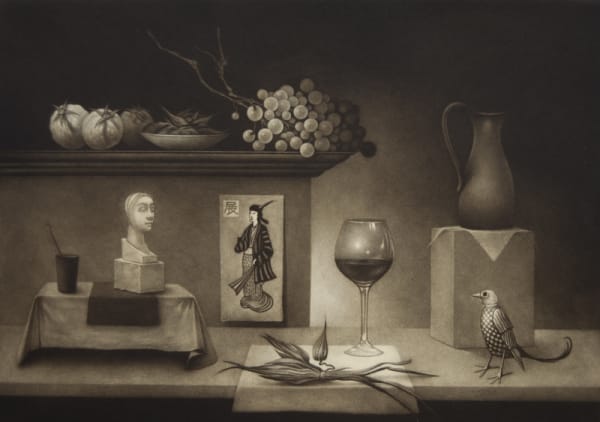Literally meaning half-tone, mezzotint is an intaglio process which works from dark to light. The plate is worked with a rocker until the whole surface is roughened and will hold the ink. The image is then burnished out, highlighting it in white against a black background when printed. It is an arduous process to prepare the plate but the results can be spectacular. As with drypoint, the plates may begin to wear down and the image can begin to lose its contrast.
One of the great collaborations in the history of printmaking was between Constable and the professional mezzotinter David Lucas, who translated the artist's vision into a series of wonderfully tonal printed images capturing the effects of light and weather on a landscape.
-
'Mezzotint is good for creating texture, the subtle play of light. Given its laborious nature it was little used by creative artists. It is essentially a technique used by craftsmen who are reproducing the works of others'
- Peter Freeth
-
Examples
-

Anon. after John Collett, The Feather'd Fair in a Fright, 1777
Mezzotint
-

Rupert, Prince Palatine of the Rhine, The Great Executioner, 1658
Mezzotint
-

Bernard Lens II, after Sir Peter Lely, The Judgement of Paris
Mezzotint
-

Tiina Kivinen, Quiet Pose, 2016
Mezzotint
-

Erling Valtyrson, Arrangement with glass, 2016
Mezzotint
-

David Lucas, after John Constable, The Lock, 1834
Mezzotint
-







 A Buyer's Guide to Prints
A Buyer's Guide to Prints